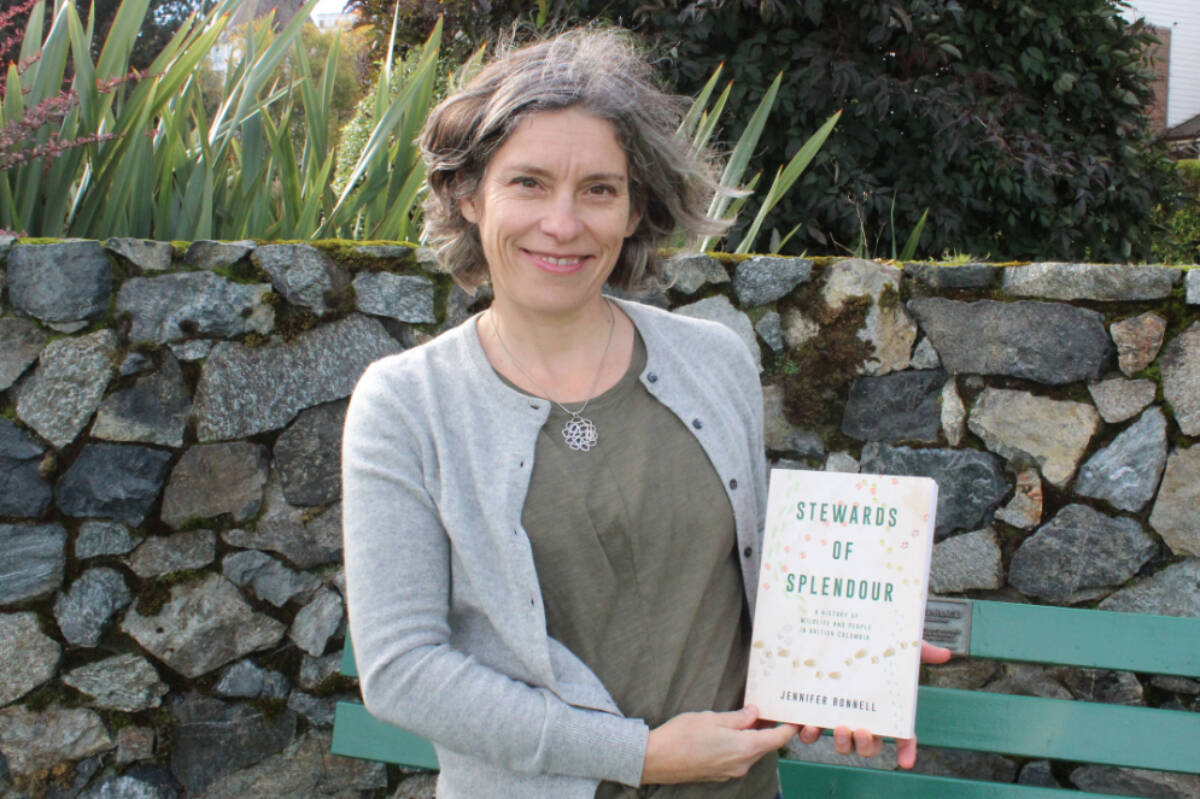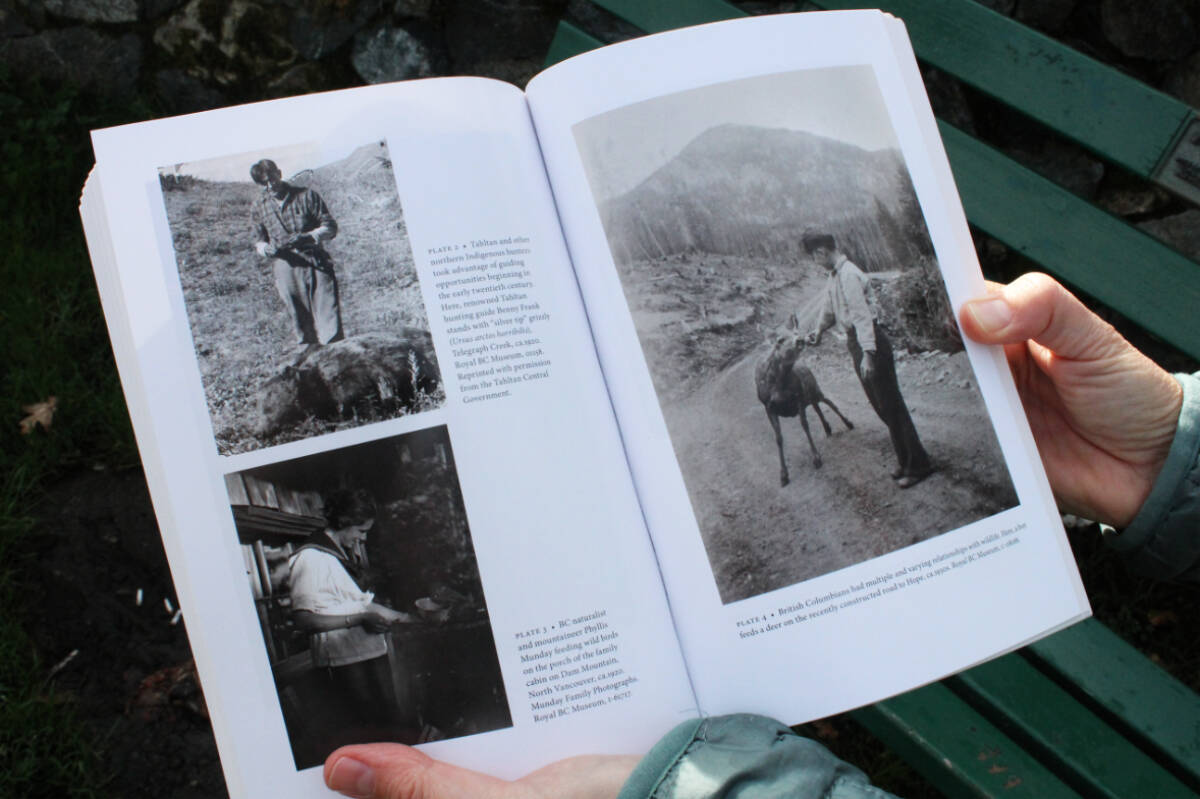Jennifer Bonnell was a field assistant in the 1990s to biologist Tom Ethier as both were doing research in B.C. on the Northern Goshawks, a species of hawk that requires old growth conditions.
Little did Bonnell know that this work would lead to a “big book” decades later.
Bonnell worked with Ethier for two summers gathering research and 25 years later they reconnected through a mutual friend. When he was assistant deputy minister of forests, he asked her if she could write a government report that later turned into a book.
Five years later, Bonnell’s book Stewards of Splendor: A History of Wildlife and People in British Columbia has been officially released.
Back when the book was only a twinkle in Bonnell’s eyes, Ethier was looking for a history of wildlife work in the province that would document government efforts, but be much more expansive. He was looking to have something written that would consider the work of groups like Ducks Unlimited, the Nature Conservancy, naturalist groups, land trusts and other organizations. He wanted a piece of B.C. wildlife history written so he could use it as an onboarding for the new staff, according to Bonnell.
Initially, Ethier wanted a 90-page report, but Bonnell couldn’t write such a large piece of history with only 90 pages.
“Once I started getting onto the research, I did about 80 interviews for this project and reviewed a lot of historical and scientific source materials,” the author said.
Bonnell asked Ethier: “Are you OK if I turn this into a book?” Ethier was supportive of the larger project, hence kick-starting it as a book.
“The book is really about the history of people’s relationship with wildlife over 250 years in B.C. history,” said Bonnell. “So it begins with the period before 1774, the period of Indigenous history and the history of wildlife conservation by Indigenous groups. So efforts not only to conserve wildlife but to enhance wildlife population for subsistence use, and then it carries on through to the present. So it’s a big book.”
When Bonnell isn’t writing, she teaches Canadian and environmental history at York University in Toronto. Although she presently resides in Ontario’s capital, the author grew up on the West Coast. She was raised in Duncan on Vancouver Island and didn’t leave B.C. until she was 30 to do her PhD. She always thought she’d return to B.C., but she met her partner and ended up settling down in Toronto.
RELATED: Victoria children’s book author writes murder mystery set in James Bay
“It’s offered me a lot of opportunity and a lot of goodness, and it’s been really wonderful to return home to B.C. for this project and to reconnect with people that I once worked with, biologists that I once worked with, but also to meet a great number of people doing amazing work with wildlife all over the province,” said Bonnell.
At the beginning of her writing process, she took four research trips to B.C., including Smithers, Fort St. John, Kamloops and Vancouver Island. Before the pandemic, she did as much travelling as she could to conduct in-person interviews, but after 2020 it became predominately over the phone.
“The key period of history that I focus on is about the 1880s into the present when you see real efforts by governments and others, individuals and organizations to try to bring wildlife habitat and wildlife needs to the attention of the public,” said Bonnell. “I think over the last 30 years, there is a huge resurgence of not only land claims, but Indigenous control over management authority over wildlife. So the book documents that major shift and looks at the role of things like Indigenous guardians who are doing such amazing work on the land on the ground to educate their own youth about wildlife, but also to be there as people on the ground stewarding wildlife on their territories.”
Bonnell said the Royal BC Museum in Victoria was a big help to the author to gather and source images.
“I had access to an archivist who could help me choose some of the 80 images that illustrate the book and I had really wonderful support from the staff, archives curator, India Rael Young, who helped me,” she said. “I sent her a wish list of images and she was able to locate material, which also was great for them because they could showcase the amazing collections of the B.C. archives around the history of wildlife and people’s relationships in the wildlife in the province.”
ALSO READ: Some Greater Victoria two-bedroom rents now more than renting entire houses


